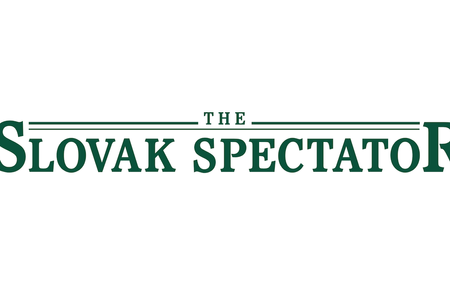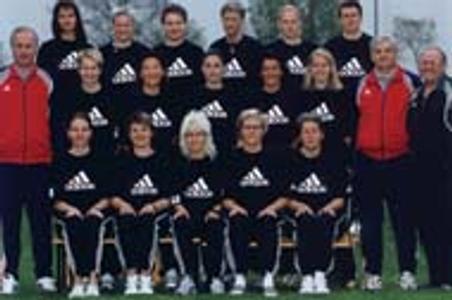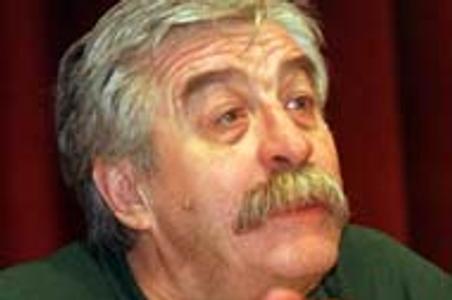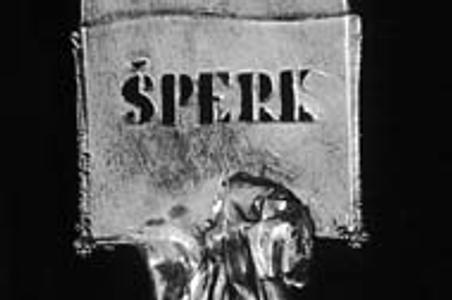Archive of articles - January 2003, page 10
If you desire to read an old article, use the search bar or select the publication date.
Divorce that was never finalised
THE 10th anniversary on January 1 of the break-up of post-war Czechoslovakia and the founding of the independent state of Slovakia has attracted little public attention, despite the pivotal importance in the modern history of Slovakia of the division from the Czech lands.Perhaps the fact that the split wass unexpected makes it easier to imagine it never happened. Or maybe because relations between Czechs and Slovaks on all levels remain so excellent the political division is less important. Added to the equation is the fact that the transition from one federal republic to two independent sovereign states was a surprisingly smooth process.Although Vladimír Mečiar's HZDS party in Slovakia openly supported the idea of independence from the federation in the two years following the fall of communism in 1989, few people in Czechoslovakia in 1992 believed that Slovakia would leave the federation. President Václav Havel, at the height of his post-Velvet Revolution popularity, opposed the move. So did the majority of Czechs and Slovaks, according to opinion polls taken at the time.
High-flying Slovak female soccer referee scores against the men
ALEXANDRA Ihringová is the first and only Slovak woman to referee soccer matches in the men's second league, and one of only two women from Slovakia to referee women's matches at an international level.Around 20 women referee men's soccer games in Slovakia, but none of the others do it at such a high level. One Slovak woman referees games in the men's third league, while the rest work in either the fourth or lower leagues.Ihringová says that when she blew the whistle in her first match in the men's second league, she felt a great sense of accomplishment.
If only humour could really heal
JÚLIUS Satinský has died. How simple and how painful to those who loved him. As simple as his humour, which everyone could understand, and as painful as one's cheeks in a fit of uncontrollable laughter.Half of the legendary Slovak comic duo Lasica and Satinský, Slovaks used to call him one of the most "human" of men, a big character with a big heart. But his humour, which always made people feel better, was not enough to cure his cancer.Satinský's death is even harder for Slovaks to accept at this point in time, when nations across the globe observe with fear as the US prepares for war with Iraq. Neither war nor cancer choose their victims, but unlike most forms of the disease, war can be prevented.
Legendary comedian leaves grief behind
HUNDREDS of people were queuing in a seemingly never-ending line at Śtúdio S theatre on January 3. They had come to say goodbye to the one who had taught them how to laugh about themselves - comedian Július Satinský.Familiarly called Julo, actor and writer Satinský has left his friends, colleagues and audience in grief after he lost his long battle with cancer on December 29, 2002. He will always be remembered as a clown, a storyteller, a friend to children, Slovakia's uncrowned king of humour and a noble-minded man.Satinský's name and theatrical career are inseparable from the person of Milan Lasica. The two created a perfect comic duo and during four decades on stage together, they become an institution in Slovakia as well as in the Czech Republic. Their initials, L+S, stood for intelligent, absurd humour, which was based on collages taken from everyday life. In their plays they improvised and juggled with language and even though they never did political cabaret, their sketches always had the right mix of irony and parody to be a reference to current events.
Top pick: Unofficial art officially presented
FOUR floors of the Esterházy Palace in Bratislava are currently filled with works of art that were created during the repressive 1970s.Those years, the time after Warsaw Pact troops violently cracked down on the relatively free Czechoslovakia in 1968, are known as the "normalization period". For artists working at that time it meant a return to socialist realism, so those revolting against the dictated standards could only develop underground alternatives to the mainstream.Entitled Slovak Visual Art 1970-1985, the exhibition is exhaustive in its scope, occupying galleries from the palace's third floor all the way down to the basement. The works are divided into several categories according to various conceptual themes.
- The law changed. Our family papers were ready. Now my kids are Slovak citizens
- Maria Theresa on the banks of Bratislava
- The Kremlin’s security agency has a Russian contractor in Slovakia - no one has noticed
- Slovak female triathlete shatters barriers with historic win at Himalayan event
- From eight to thousands of runners. How Košice marathon rose to prominence Photo
- No more photos or bank statements? Slovakia moves to ease residence process
- Slovakia loses another EV model to Spain as Stellantis chooses Zaragoza over Trnava
- Iconic Slovak barn still draws crowds. Without donors, it might have been lost Photo
- The law changed. Our family papers were ready. Now my kids are Slovak citizens
- Maria Theresa on the banks of Bratislava
- Slovak female triathlete shatters barriers with historic win at Himalayan event
- The Kremlin’s security agency has a Russian contractor in Slovakia - no one has noticed
- No more photos or bank statements? Slovakia moves to ease residence process
- Slovakia loses another EV model to Spain as Stellantis chooses Zaragoza over Trnava
- From eight to thousands of runners. How Košice marathon rose to prominence Photo
- Convicted of multiple murders, Slovakia’s mafia boss seeks release from prison
- The law changed. Our family papers were ready. Now my kids are Slovak citizens
- Maria Theresa on the banks of Bratislava
- No more photos or bank statements? Slovakia moves to ease residence process
- Weekend: Celebration of fun comes to Malacky Photo
- 3 free things to do in Bratislava in the next seven days
- Top 10 events in Bratislava for foreigners
- Digital Jarvis is real now. He is coming for your to-do list
- The Kremlin’s security agency has a Russian contractor in Slovakia - no one has noticed
- The law changed. Our family papers were ready. Now my kids are Slovak citizens
- Maria Theresa on the banks of Bratislava
- No more photos or bank statements? Slovakia moves to ease residence process
- A mayor resigns over €2.7 million fraud scandal at town hall
- The Kremlin’s security agency has a Russian contractor in Slovakia - no one has noticed
- Fico praises China and Vietnam as models, says liberal democracy has failed
- News digest: Violent gang in Bratislava is under arrest
- He designed Gatwick. But this is his masterpiece
- The law changed. Our family papers were ready. Now my kids are Slovak citizens
- News digest: Prosecutor seeks jail for NBS Governor Kažimír as his political support wanes
- Slovakia loses another EV model to Spain as Stellantis chooses Zaragoza over Trnava
- Slovak female triathlete shatters barriers with historic win at Himalayan event
- Weekend: Celebration of fun comes to Malacky Photo
- News digest: Fico’s bloc wants to save money by restricting electoral access
- Slovakia plans to restrict access to new medicines amid funding shortfall
- No more photos or bank statements? Slovakia moves to ease residence process More articles ›





